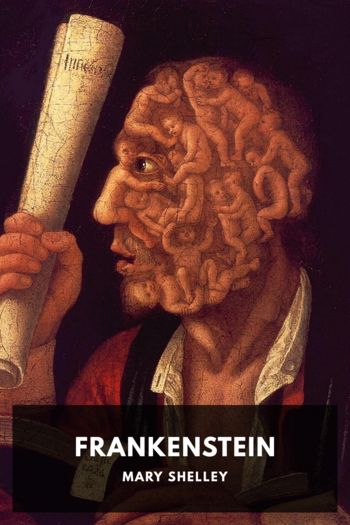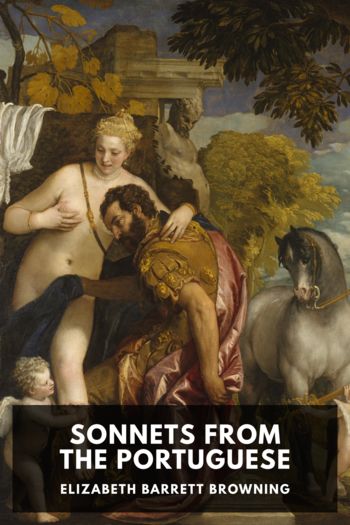Two-Way Mirror, Fiona Sampson [children's ebooks online .txt] 📗

- Author: Fiona Sampson
Book online «Two-Way Mirror, Fiona Sampson [children's ebooks online .txt] 📗». Author Fiona Sampson
And Kenyon continues to make introductions. In May, two days after Talfourd’s premiere, he persuades her to come to dinner at Devonshire Place to meet Walter Savage Landor and William Wordsworth. Against the tide of fashion, she still admires the latter greatly:
You might think me affected if I told you all I felt in seeing the living face. His manners are very simple; & his conversation not at all prominent—if you quite understand what I mean by that. I do myself—for I saw at the same time—Landor, the brilliant Landor! & felt the difference between great genius and eminent talent.
The dinner goes so well that Elizabeth meets the ‘great genius’ not once but twice. The social texture of Wordsworth’s life has been thinned by the recent deaths of Coleridge, Charles Lamb and James Hogg, and perhaps this is why ‘he was very kind to me, & let me hear his conversation’. Did he but know it, he is also making a valuable literary ally, who in years to come will use her own literary prestige to advocate his work.
Right now, though, it’s no surprise that the sixty-six-year-old is taken with this personable young woman. At thirty, Elizabeth seems unaware of her own charm in a way she was not in girlhood. But we glimpse it thanks to yet another of John Kenyon’s introductions. The day before her dinner with Wordsworth, Elizabeth met bestselling writer Mary Russell Mitford. She found the prospect of this encounter nerve-wracking too, so Kenyon suggested a visit to London Zoo. On 27 May, he and Miss Mitford called for Elizabeth at Gloucester Place; the ensuing carriage outing to Regent’s Park marked the start of a firm friendship, one that will prove hugely influential for the young poet.
At last Elizabeth finds herself close up to a woman writer who can serve as both model and guide. But possibly she hadn’t imagined her future quite like this. The talkative, bonneted forty-eight-year-old she now gets to know is living in relative poverty outside London, and writing prose. Miss Mitford’s home at Three Mile Cross near Reading has found fame in her ‘Our Village’ series, collected in five immensely popular volumes as Sketches of English Character and Scenery. No classic beauty, she nevertheless has the same round face, brown hair and large eyes that Elizabeth’s own childhood portraits captured. Also like Elizabeth, she has thick dark eyebrows and eyes that slant as if in amusement. She looks not aesthetic but questioning, shrewd, emotionally intelligent. Small wonder, perhaps. Miss Mitford is both unmarried and unsheltered. She has to support both herself and a spendthrift father by her writing – he’s worked his way through both an enormous lottery win that came her way in childhood and his late wife’s fortune. The writer she’s become as a result is highly productive, tenacious and pragmatic. When she meets Elizabeth she’s in London, therefore, on one of her periodic literary networking trips.
As a well-known playwright herself, Miss Mitford too was at that first night party for Ion, where she met and was (as Elizabeth will later discover) signally unimpressed by Robert Browning. By contrast, the next day Kenyon introduces her to this:
sweet young woman […] who reads Greek as I do French, and has published some translations from Æschylus, and some most striking poems. She is a delightful young creature; shy and timid and modest.
First impressions are reinforced the following evening:
Miss Barrett has translated the most difficult of the Greek plays […] and written most exquisite poems in almost every style. She is so sweet and gentle, and so pretty, that one looks at her as if she were some bright flower; and she says it is like a dream that she should be talking to me, whose works she knows by heart.
This is Miss Mitford boasting to her father about her own literary reputation; but the naïve gushiness she records is unmistakably Elizabeth’s. And it’s a pleasure to see ‘Miss Barrett’ as these letters picture her. They remind us that, far from the figure of future melodramatic fantasy, there’s nothing eccentric, hysteric or gaunt about this petite, pretty thirty-year-old. Being sheltered has kept her mentally and physically young. She has a spring in her mental step, and a receptiveness to the world that’s just opening up to her.
We can imagine Mary Russell Mitford in the brick-built Berkshire labourer’s cottage that she shares with her father, looking out over the flower garden of which she’s so proud and mulling Elizabeth’s literary prospects, as she commissions the young poet for Findens’ Tableaux, an annual she edits. When she writes in July to a friend, Lady Dacre, that Elizabeth, ‘Will I think get rid of all that is painful in her shyness, retaining the most graceful modesty, if once brought forward in the Society she is so fitted to adorn. She is very pretty, very gentle, very graceful, & with a look of extreme youth which is in itself a charm,’ Miss Mitford seems at first glance merely to be treating the London literary ‘village’ just like her own gossipy ‘small neighbourhood […] where we know every one, are known to every one, interested in every one, and authorised to hope that every one feels an interest in us.’ But in fact this is more than idle chat. She’s deftly connecting the young poet to that rare thing, a literary network that can make particular space for an emerging woman writer. For, under her former name of Barbarina Wilmot, Lady Dacre is a playwright and poet, active in a circle that includes Anna Seward, Mary Tighe, and





Comments (0)